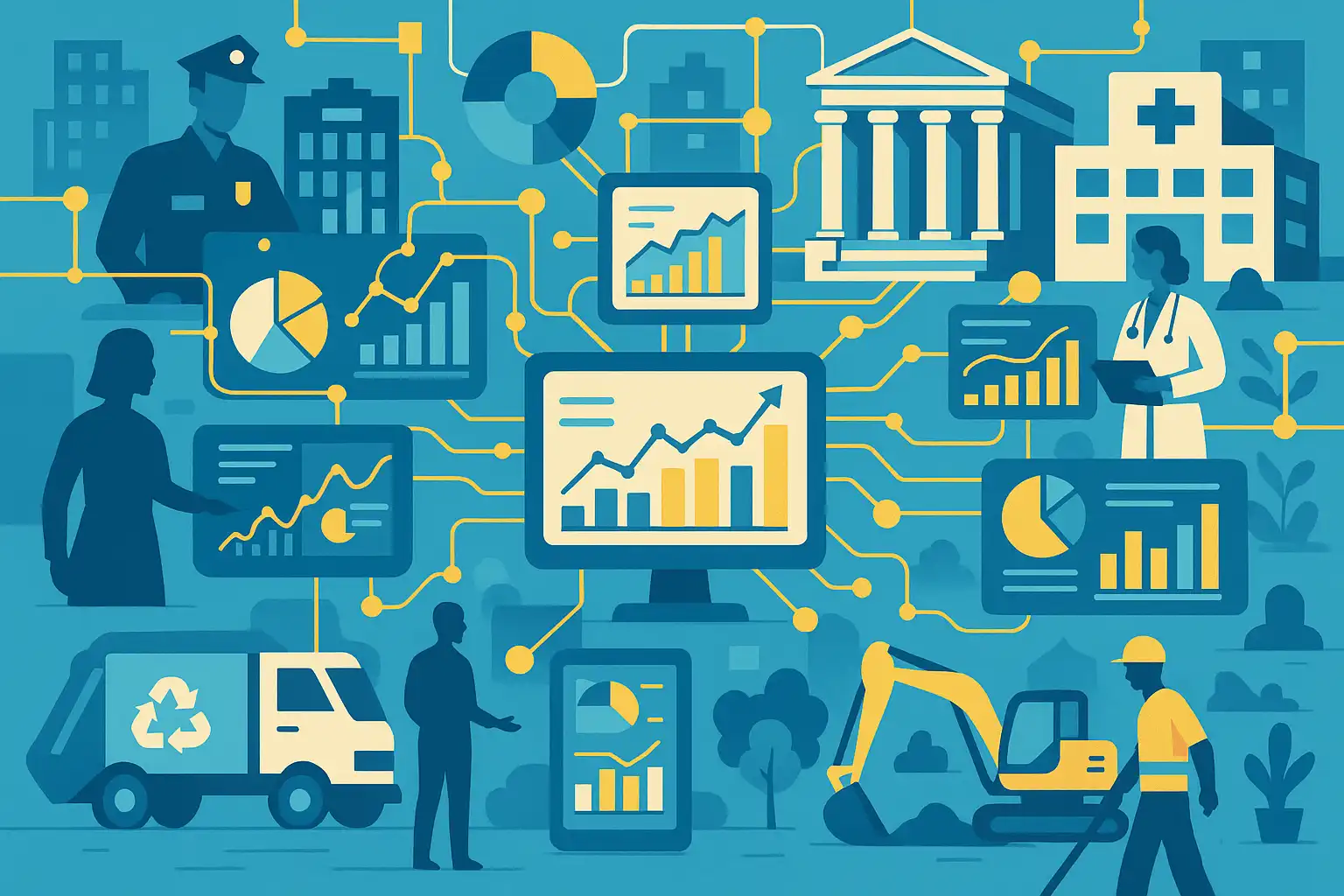
The data strategy roadmap for the federal public service is a clear plan to help government departments use data more effectively, support public trust, and improve decision-making. In simple terms, it sets out how the federal government can organize, manage, and use its data assets to provide better services, make evidence-based decisions, and foster transparency. This guide answers key questions for anyone seeking a practical overview of what this roadmap involves, its major components, and the steps needed to make it work.
What are the key components of a federal public service data strategy roadmap?
At the heart of the data strategy roadmap for the federal public service are several core components that guide actions and priorities. Understanding these helps explain how the roadmap turns vision into action:
- Four mission areas: The roadmap identifies four main goals:
- Data by Design: Building data management into systems from the start.
- Data for Decision-making: Ensuring data supports policies and operations.
- Enabling Data-driven Services: Improving public services using reliable data.
- Empowering the Public Service: Supporting employees in using and understanding data.
- Ethics, fairness, and inclusion: The roadmap commits to ethical data use. It promotes fairness, diversity, Indigenous data sovereignty, and inclusion in all data practices.
- Governance and accountabilities: Clear structures are put in place. Roles like Chief Data Officer are defined, and departments line up with wider government policies.
- Concrete actions: The roadmap sets out specific steps such as creating data standards (like the GC Data Quality Framework), developing tools for data assessment, supporting open data, and scaling shared infrastructure.
- Stewardship and transparency: It focuses on responsible data stewardship and open, transparent data practices.
- Workforce capabilities: Skill-building is central. Employees are trained in data literacy and encouraged to pursue data-focused careers within the public service.
- Ongoing monitoring: Progress is measured with performance indicators and regular reports to drive improvements over time.
By putting these elements together, departments can manage data consistently and responsibly—from collection to analysis to sharing—making government more responsive and trustworthy.
How does a data strategy roadmap benefit the federal public service?
The data strategy roadmap for the federal public service brings several practical benefits to government and citizens alike. Here’s how it makes a difference:
- Efficient service delivery: Staff can access accurate, high-quality data, making public programs more effective for everyone.
- Evidence-based policymaking: Data supports sound decisions, leading to better outcomes in policy areas like health, safety, and emergency response.
- Public trust and accountability: By encouraging open data and transparency, the roadmap helps government earn the public’s trust.
- Collaboration: With shared standards and tools, departments can break down silos, collaborate, and share resources more easily.
- Workforce empowerment: The focus on data literacy and career development boosts employee confidence and capacity to work with data.
- Ethics and respect: Prioritizing ethics, privacy, and Indigenous data sovereignty ensures sensitive data is managed with care and respect.
For example, departments using this approach can better target health initiatives, improve emergency responses, and report to the public with more clarity and openness. When all teams follow the same data strategy alignment with business goals, results come faster and with greater impact.

What steps are needed to build an effective data strategy roadmap?
The journey to a strong data strategy roadmap for the federal public service involves a series of logical, practical steps. Whether starting from scratch or improving an existing plan, these steps guide organizations to success:
- Define mission areas: Start by setting clear priorities that match the organization’s goals.
- Engage stakeholders: Consult widely across departments to understand needs and align with overall government initiatives.
- Establish governance: Define clear roles, like Chief Data Officers, and set accountabilities for data stewardship.
- Design standards and frameworks: Develop common rules and tools for how data is collected, stored, and used.
- Advance ethical and inclusive practices: Ensure that all data actions honor ethical standards, fairness, and Indigenous data sovereignty.
- Build workforce capacity: Create and deliver training programs in data literacy, and attract diverse talent into data roles.
- Promote open and transparent data: Support initiatives that make data accessible, reusable, and transparent.
- Monitor and adapt: Use key performance indicators (KPIs) and regular reports to track progress and adjust as needed.
For organizations seeking to strengthen compliance and trust, it is wise to integrate a sound data governance strategy within the larger roadmap. This ensures consistency across all teams and projects.
Tools and frameworks to support the roadmap
Tools like the GC Data Quality Framework and FAIR assessment instruments help maintain high standards. Regular data quality assessments and modern cloud infrastructure ensure that data remains secure, reliable, and ready for use. Many governments also invest in data catalogs, automated workflow tools, and data visualization software to empower teams and improve transparency.
Workforce development and inclusion
Developing the workforce is not just about delivering one-off training. Instead, it’s about offering ongoing learning, mentorship, and career pathways. Programs in data literacy, ethical data handling, and Indigenous data rights build a respectful and inclusive culture.
How does the roadmap address ethics, fairness, and Indigenous data sovereignty?
Ethics and fairness are woven throughout the data strategy roadmap for the federal public service. The roadmap requires strict respect for privacy, security, and fairness in all dealings with data. It calls for active steps to address systemic biases and to include voices from diverse communities, including Indigenous people.
Where data involves Indigenous communities, the strategy emphasizes Indigenous data sovereignty. This means Indigenous groups have authority and ownership over their own data, safeguarding culture and rights. These principles are built into standards, tools, and training at every stage.
Open data and transparency
Making data open and accessible increases government transparency and public engagement. By publishing data in reusable formats and supporting open access, the public can see how decisions are made, participate in research, and hold government accountable.
In practice, open data portals, accessible dashboards, and routine public reports are some of the ways the roadmap brings this commitment to life. For government departments, maintaining data compliance security is essential when making data available, so privacy and security risks are managed without sacrificing transparency.

What are examples of successful data strategy roadmap implementation?
Real-world examples bring this roadmap to life. For instance, Canada’s Public Health Agency improved pandemic response by integrating health datasets and using data dashboards to guide decisions. Open data releases have supported research in education, housing, and the environment. Departments adopting shared tools saw faster project delivery and improved collaboration. Annual reports and KPIs allowed teams to showcase success and learn from setbacks, making continuous improvement part of the culture.
Challenges and solutions
- Challenge: Siloed data across agencies.
- Solution: Data sharing standards and common tools.
- Challenge: Skills gaps among staff.
- Solution: Regular training and support for data literacy.
- Challenge: Balancing open data with privacy.
- Solution: Careful risk assessments and privacy-by-design approaches.
Frequently Asked Questions
What is Indigenous data sovereignty and why is it important?
Indigenous data sovereignty means that Indigenous communities control their own data. This ensures cultural, historical, and legal rights are respected. It’s essential for fair and ethical public service policies.
How can public servants improve their data literacy?
Public servants can join workshops, online courses, and mentorship programs. Departments often offer in-house training and encourage staff to apply new skills in daily work and projects.
How do regular reports support the data strategy roadmap?
Frequent reports track progress with clear KPIs, highlight successes, and identify areas needing improvement. This feedback loop is critical for learning and adapting the strategy over time.
Why is open data valuable for citizens?
Open data lets citizens see how the government works, use information for research or business, and contribute to policymaking. It supports transparency, innovation, and public trust.
